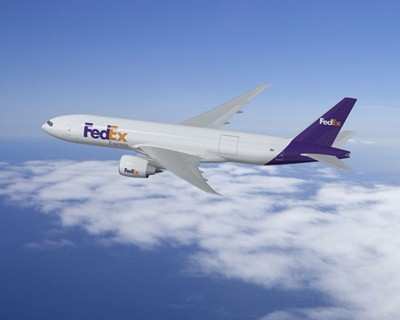Fri, Nov 16, 2012
Applauds Inclusion Of Fire Safety, But Disappointed That Cargo Pilot Fatigue Issues Not Addressed
The FDX Master Executive Council (MEC) of the Air Line Pilots Association (ALPA), Int’l is encouraged by the NTSB's publication of its Most Wanted List for 2013. This list represents the top ten advocacy priorities for the NTSB. It is designed to increase awareness of, and support for, the most critical changes needed to reduce transportation accidents and save lives.

Included in this year’s list is “Improve Fire Safety in Transportation.” Fire incidents constitute a daily concern and threat to commercial airline pilots, and in particular, commercial airline pilots who operate cargo aircraft. As was evidenced by the fatal UPS 747 accident in Dubai on September 6, 2010, in-flight fires and/or smoke incidents are very difficult to manage as they can develop and expand in a relatively short time frame. The NTSB’s inclusion of this item recognizes the need for enhanced prevention measures designed to eliminate fire and smoke incidents in addition to improvement of training and procedures for crews who experience such an event. “The FDX MEC and ALPA have worked hard on these issues for a number of years. We are hopeful that the NTSB’s inclusion of this issue will bring wider attention to this very serious issue,” commented Captain Scott Stratton, FDX MEC Chairman.
Conversely, the FDX MEC was disappointed by the removal of fatigue from the NTSB’s Most Wanted List for 2013. While fatigue has received more attention recently due to the Federal Aviation Administration’s (FAA) introduction of FAR Part 117, that effort completely ignored the conditions at United States’ cargo carriers. “Fatigue was not fixed by Part 117. Progress was made for many pilots, but an entire segment of the industry, ironically the segment of the industry known to fly in the most fatiguing environment – between midnight and 6:00 a.m., was completely left out of the fix. That’s thousands of pilots flying the nation’s cargo every night of the year. If anything, the failure to include all commercial pilots in Part 117 demonstrates that we are still not close to understanding the dangers that fatigue poses to everyone in or outside of the aircraft,” said Captain Stratton. “The fight to expand fatigue protections continues with legislative
efforts like The Safe Skies Act of 2012 as represented in the House of Representatives as H.R. 4350 and in the Senate as S. 3263, but the NTSB should have maintained fatigue as a top ten risk with so many pilots excluded from Part 117.”
More News
Also: Pratt & Whitney 747SP, Gratia Aero, Robinson/MagniX, Jack Pelton Part5 The Avidyne Vantage 12 is finally certified and will shortly be shipping out so that aging Cirrus a>[...]
Aero Linx: Army Aviation Medicine Association (AAVMA) The Society of US Army Flight Surgeons (SoUSAFS) serves to advance the science and art of Aerospace Medicine and its allied sc>[...]
Witnesses Reported That They Heard A Loss Of Engine Power Analysis: Witnesses reported that the airplane departed from runway 35 after a successful runup. During the initial climb,>[...]
Radio Magnetic Indicator An aircraft navigational instrument coupled with a gyro compass or similar compass that indicates the direction of a selected NAVAID and indicates bearing >[...]
"After exiting, I had a vague recollection of what just happened…and a much clearer view of how quickly hypoxia can sneak up. Sign-ups for PROTE are open each day of AirVent>[...]
 OSH25 Day 5 Redux: Avidyne Vantage 12, Is Fly-Inn An AeroBnB?, B25 Miss Mitchell
OSH25 Day 5 Redux: Avidyne Vantage 12, Is Fly-Inn An AeroBnB?, B25 Miss Mitchell ANN's Daily Aero-Linx (07.29.25)
ANN's Daily Aero-Linx (07.29.25) NTSB Final Report: Curtiss Wright P-40E
NTSB Final Report: Curtiss Wright P-40E ANN's Daily Aero-Term (07.29.25): Radio Magnetic Indicator
ANN's Daily Aero-Term (07.29.25): Radio Magnetic Indicator Aero-News: Quote of the Day (07.29.25)
Aero-News: Quote of the Day (07.29.25)



